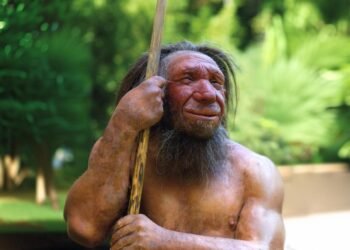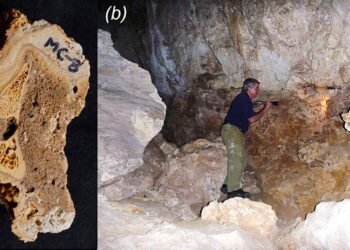A recent study conducted by researchers at the University of Exeter has unveiled detailed insights into ancient Roman surgical tools. These discoveries were made possible through the use of cutting-edge scanning technology, which allowed for an in-depth examination of the tools’ intricate craftsmanship and potential applications in ancient medical practices.

The artifacts, which include a bronze scalpel handle, two surgical probes, two needles, and a spoon, were originally unearthed around 125 years ago from the Walbrook River in London. This subterranean river, once above ground, played a crucial role in the Roman settlement of Londinium, now modern-day London. The instruments are currently held by the Devon and Exeter Medical Heritage Trust (DEMHT).
Professor Rebecca Flemming, a leading researcher in ancient Greek scientific and technological thought at the University of Exeter, has been at the forefront of this study. Using a high-powered CT scanner at the university’s Science, Heritage, and Archaeology Digital 3D (SHArD 3D) Laboratory, Flemming and her team were able to generate detailed 3D models of the instruments. This technology revealed the tools’ intricate designs.
“New technologies allow us to investigate ancient objects in novel and exciting ways, revealing so much more about their design and manufacture, their capabilities and use,” Flemming stated in a press release. She noted that the attention to detail in crafting the socket for the iron scalpel blade, for instance, allowed for worn-out blades to be easily replaced.
The study also revealed the specific uses of these instruments in Roman medical practices. The bronze scalpel handle, for example, was likely used for various operations and therapeutic procedures, including bloodletting. The surgical probes would have been employed for examining wounds, fractures, and possibly for cleaning earwax. The spoon was probably used for mixing medications, while the needles were utilized for sewing bandages.
Flemming told Newsweek: “These instruments illustrate aspects of Roman medical practice—not just ideas and theories but the kinds of interventions into bodies that occurred in the Roman world.” She added that similar instruments have been found across the Roman Empire, from Italy to Syria, indicating a widespread and standardized approach to medical care.
The SHArD 3D Lab, funded by the Arts and Humanities Research Council’s Creative Research Capability scheme, has been instrumental in this research. Dr. Carly Ameen, Lecturer in Bioarchaeology and Director of the Lab, said: “Bringing scientific techniques to bear on historical remains and putting that data into conversation with other evidence is crucial for developing our knowledge of the past.”
The high-resolution scans produced by the CT scanner have not only provided detailed visualizations of the tools but have also enabled the creation of exact replicas through 3D printing. These replicas allow people to interact with models of historical objects and gain a deeper appreciation of their use and significance.
Megan Woolley, coordinator of DEMHT, expressed enthusiasm about the project’s contributions to their collection. “It is fascinating to find out more about the material in our collection,” she said. “And having models of historical objects means people can handle them and help us to discover much more about how they would have been used.”























